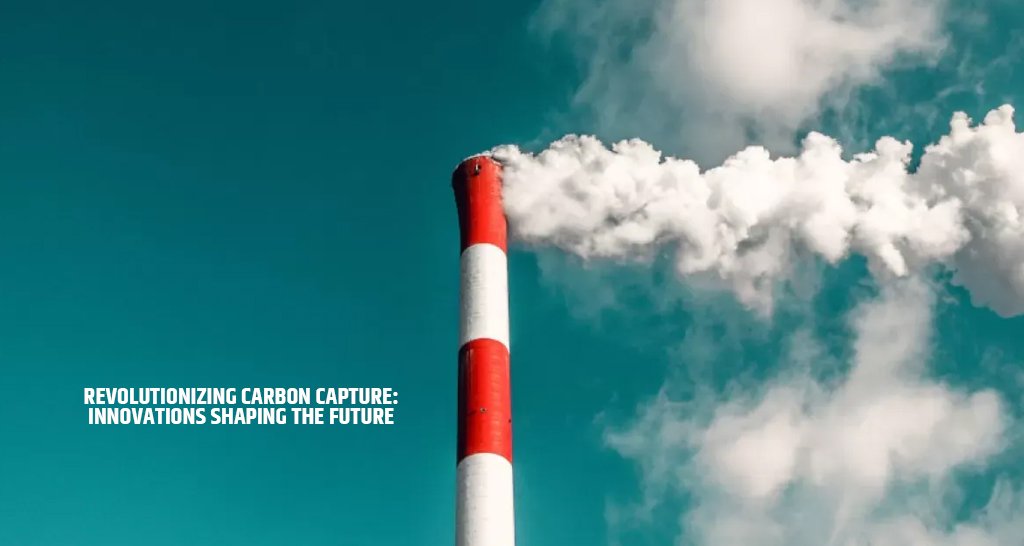Understanding Carbon Capture Technology
Carbon capture technology is a pivotal advancement aimed at reducing greenhouse gas emissions, particularly carbon dioxide (CO2), from the atmosphere. Its primary objective is to mitigate climate change by capturing CO2 emissions produced from various industrial processes and energy production before they can enter the atmosphere. The necessity of implementing carbon capture technologies is underscored by the rising global temperatures and the urgent need to meet international carbon emissions targets.
The fundamental principles behind carbon capture can be categorized into three main processes: direct air capture, post-combustion capture, and pre-combustion capture. Direct air capture involves the extraction of CO2 directly from ambient air, utilizing chemical processes to bind with CO2, which can then be stored or utilized. This method holds great potential, especially in areas where emissions sources are not localized.
Post-combustion capture is typically employed in the context of fossil fuel combustion. This process captures CO2 from the exhaust gases after the fuel has been burned. Various techniques, such as absorption using solvents, are employed to separate the CO2 from other gases, thereby enabling cleaner energy production. This approach is particularly crucial for existing power plants striving to reduce their emission footprints.
In contrast, pre-combustion capture involves removing CO2 from fossil fuels before combustion occurs. This method transforms the fuel into a mix of hydrogen and CO2, allowing for the capture of CO2 at this early stage. The hydrogen can subsequently be utilized as a clean energy source, significantly lowering overall emissions during energy generation.
Carbon capture technology plays an essential role across multiple industries, including power generation, cement production, and chemical manufacturing, as it facilitates the transition to a carbon-neutral economy. The adoption of these technologies has become increasingly urgent given the current trajectory of global carbon emissions, making the development and implementation of innovative carbon capture solutions an imperative priority for sustainable development.
Recent Innovations in Carbon Capture Methods
The field of carbon capture has seen remarkable advancements in recent years, driven by the urgent need to address climate change and reduce greenhouse gas emissions. These innovations are not only enhancing the efficiency of carbon capture methods but are also making them more cost-effective, thereby facilitating their widespread adoption in various industries.
One of the standout breakthroughs in carbon capture technology involves the development of advanced sorbents and membranes. These novel materials are designed to selectively absorb carbon dioxide from industrial emissions or the atmosphere with greater efficiency than traditional alternatives. For instance, metal-organic frameworks (MOFs) and covalent organic frameworks (COFs) have emerged as promising candidates for carbon capture. Their unique structures enable high surface areas and tunable porosities, leading to significant improvements in absorption rates and capacities.
Additionally, the method known as bioenergy with carbon capture and storage (BECCS) is gaining support. This process combines biomass energy production with carbon capture, effectively removing carbon dioxide from the atmosphere and utilizing it for energy. BECCS not only reduces emissions from fossil fuels but also creates a negative emissions scenario, which is vital for offsetting difficult-to-abate sectors.
Another innovative approach is mineralization, where carbon dioxide is chemically reacted with naturally occurring minerals to form stable carbonates. This process not only sequesters carbon in a solid form but also integrates well with existing industrial waste management strategies, utilizing byproducts like steel slag or mine tailings. By harnessing such materials, the mineralization technique offers a sustainable avenue for large-scale carbon capture.
Collectively, these advancements indicate a promising trajectory for the development of carbon capture technologies. Through ongoing research and real-world applications, the potential impact of these innovations on scaling up carbon capture initiatives is significant, paving the way for a more sustainable future.
Challenges and Limitations of Current Technologies
The advancement of carbon capture technologies has been met with a variety of challenges that impede their widespread adoption. One significant barrier is the high capital costs associated with the installation and operation of these systems. Currently, investments in carbon capture facilities require substantial financial commitments, which can be discouraging for both private sector stakeholders and public institutions. These costs are often compounded by the need for ongoing maintenance and operational expenses, which further complicate economic feasibility.
Another critical limitation is the energy requirements of carbon capture processes. Many existing technologies demand substantial energy inputs, raising concerns about the net environmental benefits. If the energy used in capturing carbon is derived from fossil fuels, the overall carbon footprint may negate some of the intended benefits. Finding low-energy, efficient methods of capturing carbon dioxide is vital for improving the sustainability of these technologies.
Public perception also plays a crucial role in the adoption of carbon capture solutions. There is often skepticism regarding the efficacy and safety of these technologies, particularly with regard to long-term storage of captured CO2. This skepticism can lead to opposition against new projects, hindering development and deployment, despite their potential environmental benefits. Additionally, regulatory and policy barriers often restrict investment and development within the carbon capture sector. Inconsistent policies across regions can create uncertainty for investors and innovators looking to contribute to this field.
To overcome these challenges, strategies must be developed that focus on reducing costs through economies of scale, enhancing energy efficiency, and increasing public education and outreach. Engaging with stakeholders, policymakers, and communities can improve the landscape for carbon capture, fostering an environment where these technologies can thrive and contribute meaningfully to climate goals.
The Future of Carbon Capture: Trends and Prospects
As the world moves towards a more sustainable future, carbon capture technology is poised for significant advancement. Several trends are becoming evident, which could reshape the landscape of carbon emissions reduction over the next decade. Innovations in carbon capture methods are expected to leverage new materials and processes that enhance efficiency and cost-effectiveness. Emerging technologies, such as direct air capture (DAC) and bioenergy with carbon capture and storage (BECCS), are gaining traction, showcasing the potential to transform greenhouse gas management.
In addition to novel technologies, there is the growing emphasis on integrating carbon capture systems with renewable energy sources. This synergy could facilitate the development of hybrid systems that optimize energy use while maximizing carbon sequestration. For instance, connecting renewable energy to carbon capture operations can offer a solution to the intermittency issues by utilizing excess renewable energy production to power capture processes, thereby promoting efficiency and sustainability.
International collaboration will also play a pivotal role in the future of carbon capture innovations. Countries are increasingly recognizing the urgency of climate action, leading to partnerships that address technical, regulatory, and financial obstacles. These collaborative efforts, bolstered by shared knowledge and resources, are likely to expedite the commercialization of advanced carbon capture technologies, creating a global market for emission reduction solutions. Furthermore, public and private investments are crucial in fueling research and development in this field. Through targeted funding and policies, stakeholders can incentivize innovation and create an enabling environment for new technologies to flourish.
As we look ahead, the intersection of technology advancements, renewable integration, international cooperation, and strong financial backing will be vital in driving the future of carbon capture forward. This combined approach holds promise for achieving ambitious global emissions reduction targets and mitigating climate change impacts.



